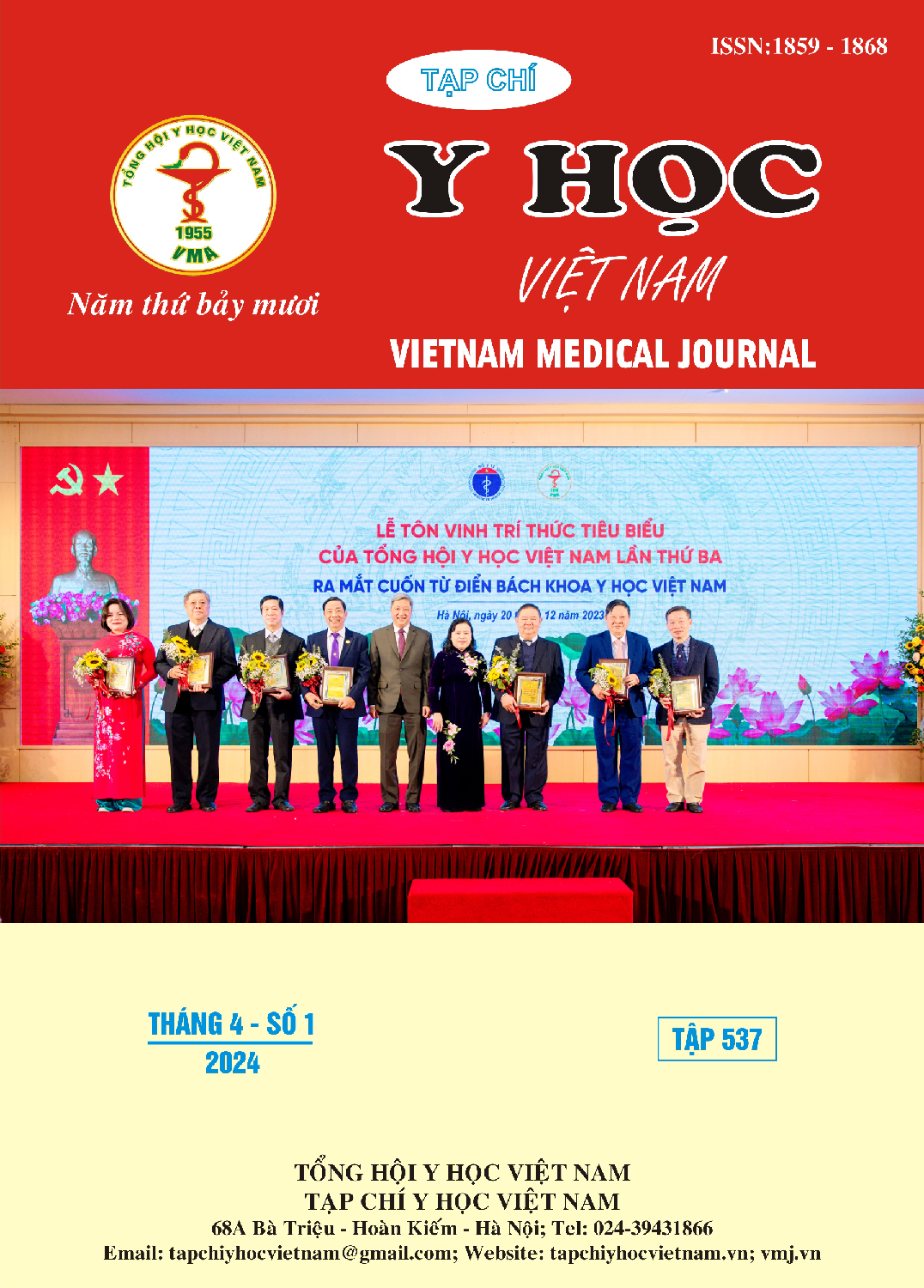OUTCOMES OF SURGERY FOR CLOSED FEMORAL SHAFT FRACTURES WITH PLATES IN THE ELDERLY AT THAI BINH GENERAL HOSPITAL
Main Article Content
Abstract
Objective: To evaluate the outcomes of surgery for closed femoral shaft fractures with plates in the elderly at Thai Binh General Hospital. Methods: A descriptive cross-sectional study was conducted among 94 elderly patients with closed femoral shaft fractures operated with plates at Thai Binh General Hospital from January 2020 to December 2022. Results: 94 patients including 25 males (26.6%), 69 females (73.4%); Average age 73.5±9.5 (from 61 to 98 years old); The majority of patients were in rural areas (91.5%). Household injuries (61.7%), traffic accidents (31.9%). Fractures in the middle third location (46.8%) and distal third 1/3 (39.4%). AO Classification: type A (60.7%), type C (11.6%). Associated other fractures (16.0%), chest trauma (14.9%), abdominal trauma (1.1%). On average, patients have 2.0 ± 1.2 comorbidities, including bone and joint diseases (72.3%), hypertension (56.4%), and diabetes (24.5%). The average of re-examination period was 22.6 ± 10.4 months (from 7 to 40 months), functional recovery according to the Sander R scale: very good (26.8%), good (59.1%), moderate and poor (14.1%). Conclusion: Femoral shaft fractures in the elderly are often caused by household injuries; Females have higher incidence than males; Most have comorbidities. Moderate and poor outcomes are common in elderly patients with many comorbidities.
Article Details
Keywords
: femoral shaft fracture, elderly people, plating.
References
2. Đặng Hồng Hoa (2008). Nghiên cứu mật độ xương vùng cổ xương đùi của người bình thường bằng phương pháp đo hấp thụ tia X năng lượng kép. Luận án tiến sỹ y học, Học viện Quân y, Hà Nội.
3. Jain D, Arora R, Garg R, et al. (2020). Functional outcome of open distal femoral fractures managed with lateral locking plates. International orthopaedics, 44(4), 725-33.
4. Abdelmonem AH, Saber AY, El Sagheir M, et al. (2022). Evaluation of the Results of Minimally Invasive Plate Osteosynthesis Using a Locking Plate in the Treatment of Distal Femur Fractures. Cureus, 14(3), e23617.
5. Nguyễn Tiến Linh (2018). Nghiên cứu quy trình điều trị gãy kín thân xương đùi không vững bằng đinh nội tủy có chốt dưới màn tăng sáng. Luận án Tiến sĩ y học, Học viện Quân y.
6. Vũ Trường Thịnh (2021). Đánh giá kết quả phẫu thuật gãy kín thân xương đùi ở người lớn bằng nẹp vít tại Bệnh viện Hữu Nghị Việt Đức. Luận văn Thạc sĩ Y học, Trường Đại học Y Hà Nội.
7. Touloupakis G, Ghirardelli S, et al. (2022). A modified anterolateral swashbuckler approach for distal femoral fractures: description and outcomes. Acta bio-medica: Atenei Parmensis, 93(1), e2022005.
8. Vu HM, Nguyen LH, et al. (2020). Individual and Environmental Factors Associated with Recurrent Falls in Elderly Patients Hospitalized after Falls. International journal of environmental research and public health, 17(7).
9. Sanders R, Swiontkowski M, et al. (1991). Double-plating of comminuted, unstable fractures of the distal part of the femur. The Journal of bone and joint surgery American volume, 73(3), 341-6.
10. Hoàng Ngọc Minh (2020). Nghiên cứu khả năng cố định ổ gãy trên thực nghiệm và kết quả điều trị gãy kín đầu dưới xương đùi người lớn bằng nẹp khóa. Luận án Tiến sỹ y học, Học viện Quân y, Hà Nội.


